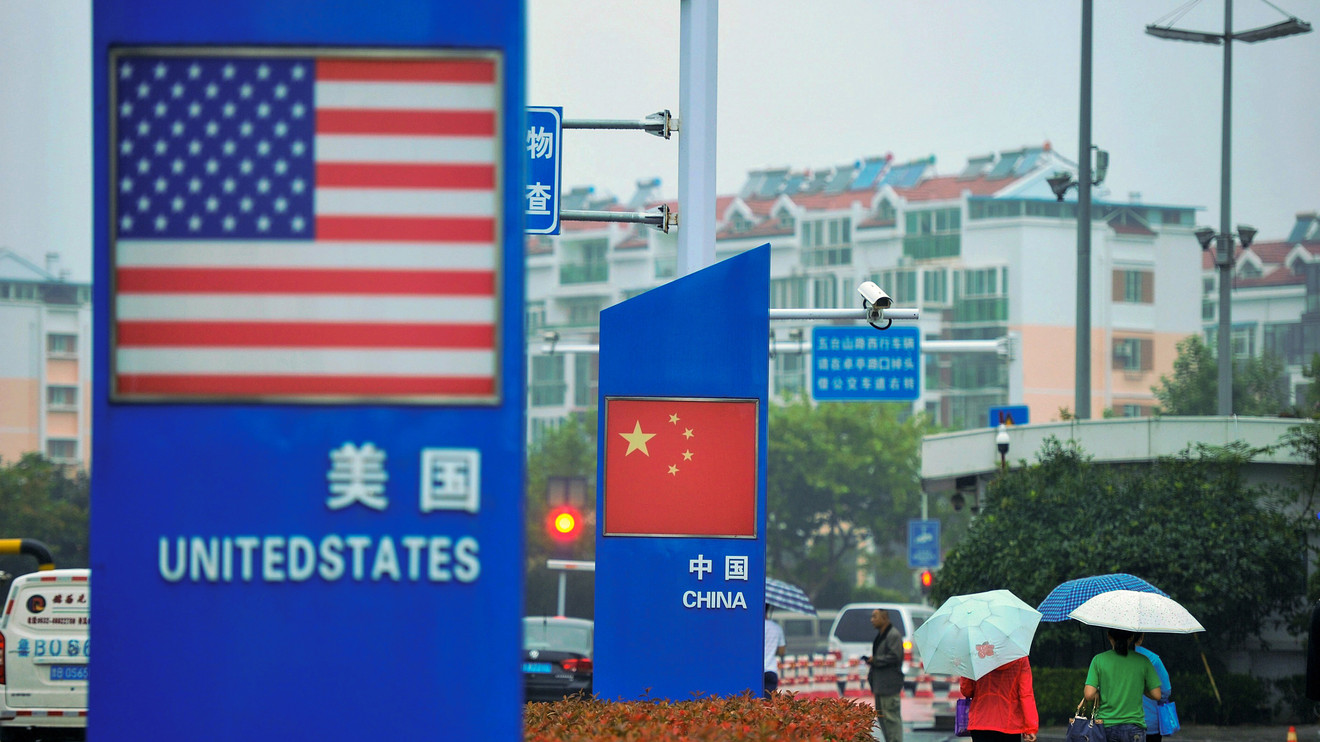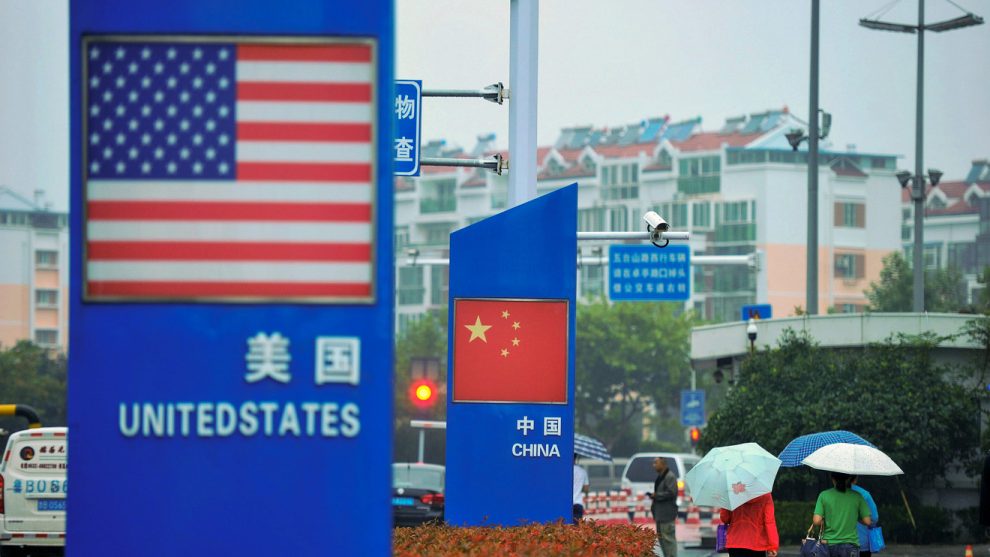
U.S. stocks on Thursday opened solidly higher after China fixed its onshore currency at the weakest level since 2008 but slightly higher than feared, and as trade data out of the world’s second-largest economy was more upbeat, helping to stabilize a market that has been on edge over global economic growth fears.
How did benchmarks perform?
Futures for the Dow Jones Industrial Average DJIA, +0.32% rose 104 points, or 0.4%, the S&P 500 index SPX, +0.58% climbed 14 points, or 0.5%, to reach 2,898, while the Nasdaq Composite Index COMP, +0.62% tacked on 58 points to reach 7,919, a rise of 0.7%
On Wednesday, major indexes mounting a stunning reversal, with the Dow finishing 22.45 points lower, or less than 0.1%, to 26,007.07, after sinking 2.3% or 589 points, at the session low. The S&P 500 index finished 2.21 points, or 0.1%, higher at 2,883.98, after skidding nearly 2%, while the Nasdaq gained 29.56 points, or 0.4% to 7,862.83, reversing an intraday 130-point slide in the technology-heavy index.
The reversal for the Dow and S&P 500 represented their biggest turnarounds since Dec. 27, 2018, according to Dow Jones Market Data.
What’s driving the market?
Markets are still focusing on the currency fix in China as a Sino-American tariff dispute has shifted into a potential currency clash between the world’s largest economies. However fears of the worst outcome were at least temporarily quelled on Thursday after the People’s Bank of China set the onshore yuan’s USDCNY, -0.1855% reference rate at 7.0039 against one U.S. dollar.
Although that is the weakest point for the currency against the dollar since April 21, 2008, it is higher than the market had feared. The PBOC allows the yuan to fluctuate up to 2% higher or lower than that level.
A weakening of the yuan below 7 on Monday, widely viewed as a line in the sand for the market and Beijing, sent global markets tumbling amid fears it was the first step in a currency war. Yuan weakness has been viewed by some as a tactic by China to combat the year-long clash over trade between the U.S. and China.
Despite Wednesday’s bounce back for equities many investors are still uneasy over the possibility of a test of that session’s lows in today’s action. “Yesterday’s roller coaster provides further evidence that volatility is very much back in markets, and while the near-term trends in both equities and Treasury yields have begun to stabilize slightly, trends remain sharply lower and it wouldn’t take much to turn both trends back to the downside for a retest of recent lows,” wrote Mark Newton, technical analyst at Newton Advisors in a Thursday research note.
On Monday, the U.S. Treasury Department labeled China a currency manipulator for the first time since 1994.
Chinese officials have said they want to avoid a repeat of th 2015-2016 episode, which saw significant capital outflows after yuan depreciation.
Meanwhile, Chinese exports climbed 3.3% in July from a year earlier, better than expectations of a 1.0% decline, according to FactSet, and comes after a 1.0% drop a month ago.
A lack of fireworks tied to currencies has also helped to steady a sharp decline in yields on government debt in the past few days, with the 10-year Treasury note TMUBMUSD10Y, +4.88% holding at 1.763%, compared with a 3 p.m. Eastern Time level at 1.675% on Wednesday, marking its lowest yield since Oct. 3, 2016, according to Dow Jones Market Data.
Separately, a report on the number of people who applied for unemployment benefits in early August fell back near post 2008 recession lows, signaling the labor market remains strong. Initial jobless claims, a rough way to measure layoffs, dropped by 8,000 to a seasonally adjusted 209,000 in the seven days Aug. 3, the government said Thursday.
Looking ahead, investors are awaiting also watching for a report on wholesale trade at 10 a.m.
Which stocks are in focus?
Shares of Caterpillar Inc. CAT, +0.09% were little changed after Goldman Sachs analysts lowered a price target for the industrial equipment maker to $130 from $156.
Roku Inc. ROKU, +19.03% shares jumped 21% after the company late Wednesday topped expectations with its second-quarter results and issued and encouraging outlook.
Read: Why Roku thinks Apple and Disney will give the streaming platform a big boost
IAC/InterActiveCorp. IAC, -3.36% is considering the distribution of its stakes in both Match Group Inc. MTCH, -5.59% and ANGI Homeservices ANGI, -30.24% to shareholders, the company disclosed Wednesday. It also reported better-than-expected quarterly earnings. IAC owns about 80% of Match, a collection of dating sites like Tinder and OkCupid, and about 84% of ANGI.
Shares of ANGI were down 30%, those for Match were 6.1% lower, while IAC’s stock fell 4.3%.
Shares of Lumentum Holdings Inc. LITE, +7.28% rose 8.3% Thursday, after the optical equipment and Apple Inc. AAPL, +0.64% supplier reported fiscal fourth-quarter profit and revenue that beat expectations, and provided an upbeat full-year earnings outlook.
Shares of Kraft Heinz Co. KHC, -13.57% retreated 14% early Thursday after the snack company said it expects an impairment charge of $474 million for the second quarter.
What other assets are in focus?
Gold for December delivery GCZ19, -0.99% pulled back on Thursday after the precious metal firmly breached a psychological level above $1,500 per ounce.
Oil futures rebounded, amid reports that Saudi Arabia is discussing options to stop the price fall by possibly capping production. U.S. oil prices CLU19, +2.58% were up 1.9% to reach $52.04 a barrel after tumbling 4.7% on Wednesday on the New York Mercantile Exchange, pushing the commodity into bear-market territory, commonly defined as a drop of at least 20% from a recent peak.
In Asia, Japan’s Nikkei 225 Index NIK, +0.37% gained 0.4%, Hong Kong’s Hang Seng Index HSI, +0.48% HSI, +0.48% rose 0.5%, while the CS1 300 index 000300, +1.32% climbed 1.3%.
The pan-European Stoxx 600 SXXP, +1.13%, meanwhile, headed 0.9% higher.







